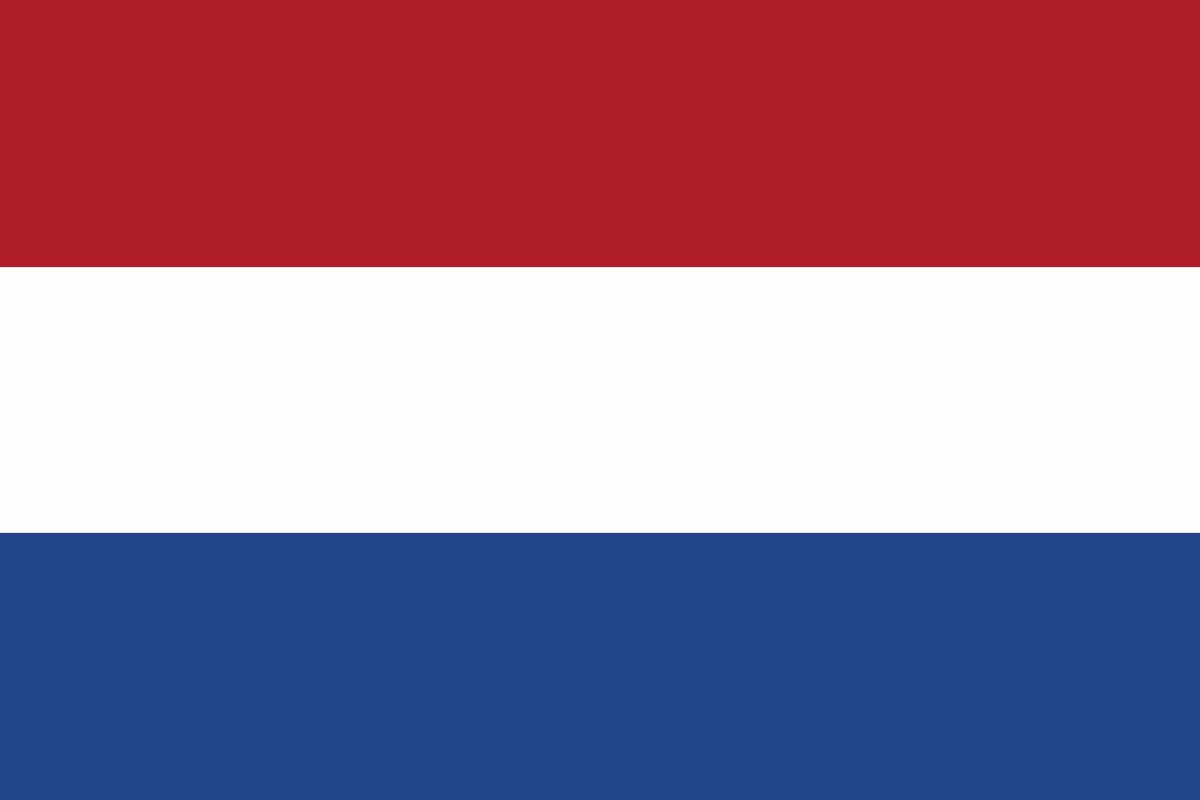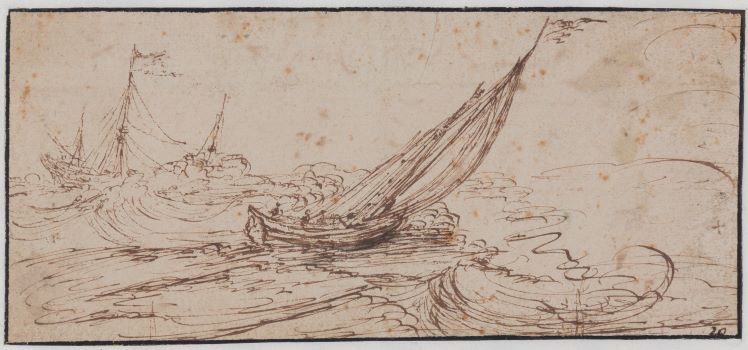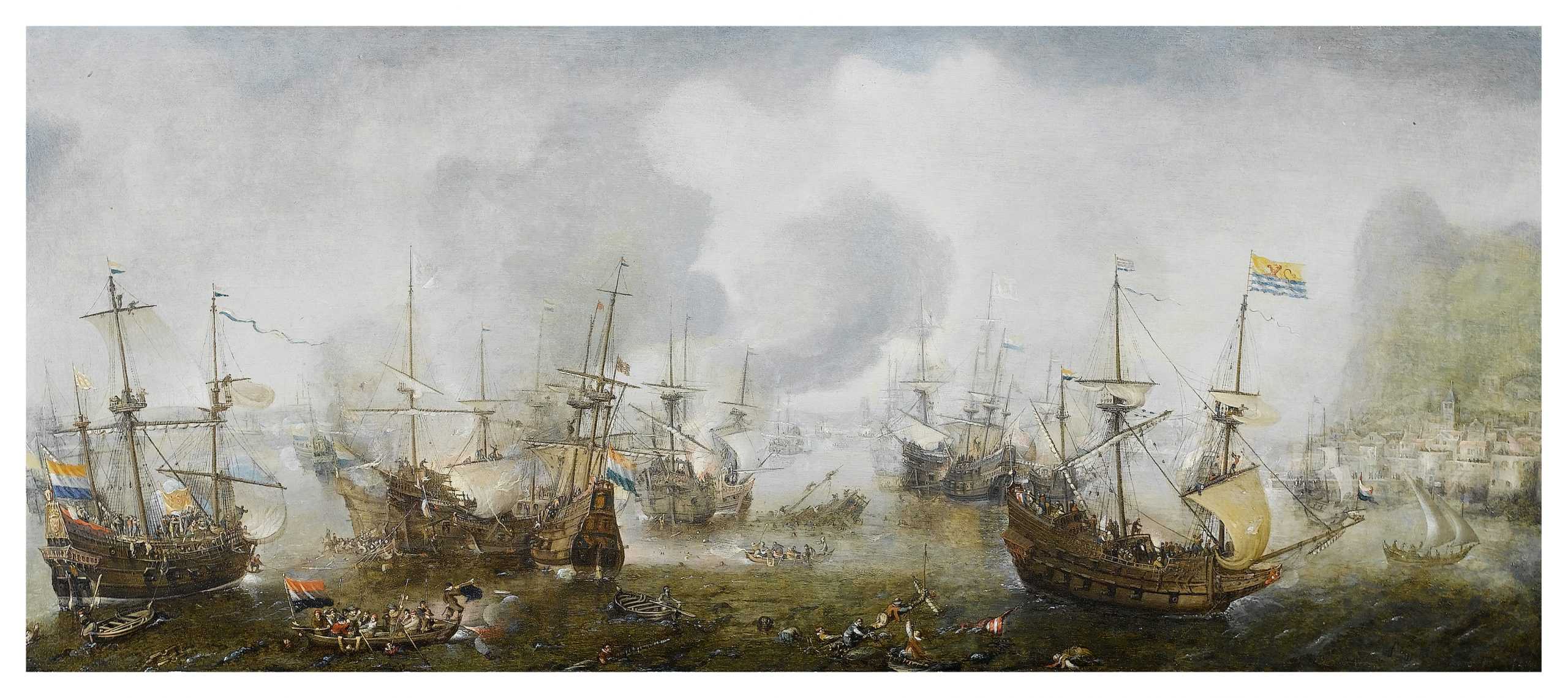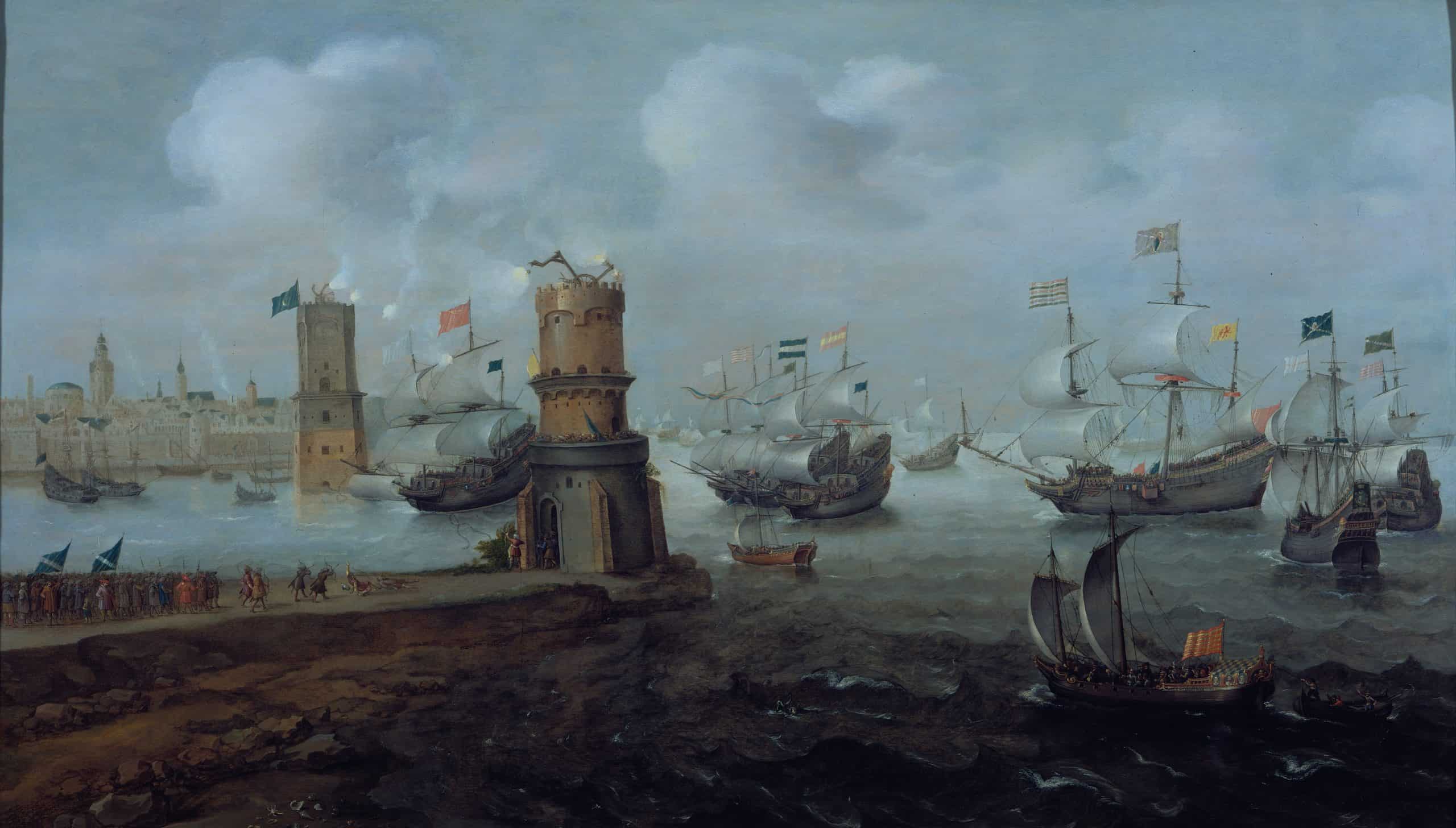CORNELIS CLAESZ VAN WIERINGEN
Cornelis Claesz van Wieringen is one of the most important representative of the first generation of Dutch naval painters.
Biography of Cornelis Claesz van Wieringen
Cornelis Claesz van Wieringen born in Haarlem about 1575 came from a shipping family. His father was a skipper and is mentioned several times in the Haarlem archives. Van Wieringen held a prominent place in the Haarlem artist environment in the first decades. He is first mentioned in 1597 when he is registered in the Haarlem Sint Lucas- guild.
Karel van Mander writes in 1604 that Van Wieringen used to sail himself and then draw and paint ships. He shows a ‘miracle gheest and witt.’ because he understands the characteristics of ships well, he is not inferior to anyone.
His earliest known painting is dated 1616 and when appraising a number of paintings signed CCW and is located in the National Maritime Museum.
Van Wieringen’s painting of Dutch whaling ships anchored near Smeerenburg during whaling is perhaps one of the oldest known representations of Dutch whaling.
We encounter Van Wieringen’s largest assignment in 1621. In that year, the Admiralty of Amsterdam wanted a painting of the Battle of Gibraltar, which had taken place on April 25, 1607.
In 1629 Van Wieringen was commissioned by the city of Haarlem to make a design for a carpet intended city council for the town hall.
The painter died on December 29, 1633 in Haarlem. He was buried in the Grote Kerk between December 31, 1633 and January 7, 1634.
Artistic Style and Influences
It is generally believed that Van Wieringen has been an apprentice of Hendrick Cornelisz Vroom (1566-1640), the founder of the genre ‘marine painting’, but for this assumption there is no evidence. Vroom and Van Wieringen must surely have known each other as fellow citizens and rival marine painters. The engraver, draftsman and painter Hendrick Goltzius (1558-1617) can be seen as a link between the two marine painters.
Van Wieringen was especially fond of depicting large warships in fine detail and using bright local colours. His drawing is always precise and correct, helped by the fact that he was a sailor and he has a good sense of perspective. In later works his tonality is greyer and closer to Simon de Vlieger.
Notable Works
Battle of Gibraltar, April 25, 1607
Oil on panel, 48.6 x 114.8 cm
Modello for the 1622 dated painting in the Scheepvaartmuseum
Signed lower right : FCW
Formerly Rob Kattenburg collection
Acquired for the Nederlands Scheepvaartmuseum, Amsterdam
Notable Works
The capture of Damietta, before 1628
Oil on panel, 72.6 x 136.5 cm
Signed on flag lower right: CORNELIS W
Provenance: Probably executed as a modello for the painting in the Calivermen’s Headquarters, Haarlem before 1628; Collection Cl. Vignat, Neuilly, Paris 1953; with Galerie Marcus, Paris 1957; Netherlands, private collection.
Van Wieringen portrayed the story a number of times (two paintings, a carpet and a drawing), so that it occupies a special place in his oeuvre. Van Wieringen showed the viewer the event from the side, making everything broader in design, which was very innovative at the time.
Exhibitions and Collections
Amsterdam, Maritime Museum, and The Hague, The Mauritshuis, Terugzien in Bewondering, 1982, no. 95; Rotterdam, Museum Boymans van Beuningen and Berlin. Gemäldegalerie im Bodesmuseum, Lof der Zeevaart. De Hollandse zeeschilders van de 17e eeuw, 1996-97, cat. no. 10.
- https://www.boijmans.nl/collectie/kunstenaars/19321/cornelis-claesz-van-wieringen
- https://fine-arts-museum.be/nl/de-collectie/cornelis-claesz-van-wieringen-vissersschepen-op-een-ruwe-zee
- https://www.rijksmuseum.nl/nl/collectie/SK-A-2163
- https://www.britishmuseum.org/collection/term/BIOG51028
- https://www.hetscheepvaartmuseum.nl/doen/online-museum/maritiem-gemis/maritiem-gemis-frans-van-den-hoven
- https://www.franshalsmuseum.nl/nl/art/de-verovering-van-damiate/
- https://collections.louvre.fr/en/ark:/53355/cl020108325
Related Products
A second version of The capture of Damietta is in the collection of the Frans Halsmuseum in Haarlem and Cornelis van Wieringen painted both paintings in preparation for the magnificent tapestry after his design that is still in the Mayor’s Room of Haarlem City Hall today.
There is also a drawing of Damiate by Van Wieringen which is kept in the Musée du Louvre in Paris.
Further Reading and Resources
E.J. Kalf, De ‘Val van Damiate’ of het nut van vergissingen, in: Haerlem jaarboek 1980; Wiepke Loos, Willem Thybaut en een Haarlemse legende op Gouds kerkeglas, 1596, Spiegel Historiael, Vol. 17 (1982) pp. 213-220; Wim van Anrooij, Middeleeuwse sporen van de Haarlemse Damiate-legende, 1993; Ron J.W.M. Brand, “Bedreven in de konst van schepen ende see”. Cornelis Claesz. van Wieringen en de zeeschilderkunst aan het begin van de zeventiende eeuw, Pijnacker 1995; I. van Thiel-Stroman, Cornelis Claesz van Wieringen, in: Paintings in Haarlem 1500-1850, Gent-Haarlem 2006, pp. 343-346; Willem Frijhoff, Damiette appropriee, in: Revue du Nord, Vol. 88 no. 364 (jan-mrt 2006), pp. 7-42; J.J. van Moolenbroek, De ketting van Damietta, een Haarlems zaagschip en Willem I van Holland. Over de wording en standaardisering van een kruistochtmythe, in: Jaarboek voor Middeleeuwse Geschiedenis 14 (2011), Bussum 2012; Paintings in Haarlem 1500-1850. The collection of the Frans Hals Museum, exhib. cat. Ghent/Frans Hals Museum Haarlem, 2006, pp.343-346, pp.643-644, no.505. Ampzing, Samuel, Beschrijvinge ende Lof der Stad Haarlem in Holland, 1628 “Daer is een Schip”. von Dominte van hem inden Ouden Doelen te sien, een meesterstuck van syne kloeke handelinge”.
Conclusion
Cornelis Claesz. van Wieringen, together with Hendrick Cornelisz.Vroom (also from Haarlem), is the most important representative of the first generation of Dutch naval painters.
About 50 paintings are known in Van Wieringen’s name, of which- of about 20 are with certainty of. his hand or can be attributed to him.
Historical pictures of a maritime nature were of special interest to Van Wieringen and by his hand there are numerous views of Spanish warships arriving off the Coast, the Capture of Mediterranean fortresses, and historical and diplomatic maritime receptions.
Through this pillar page, we hope to have provided you with a comprehensive insight into the life, influences, and remarkable creations of this splendiferous painter.





